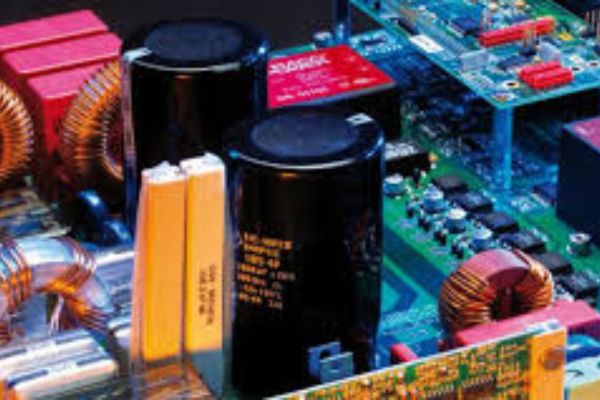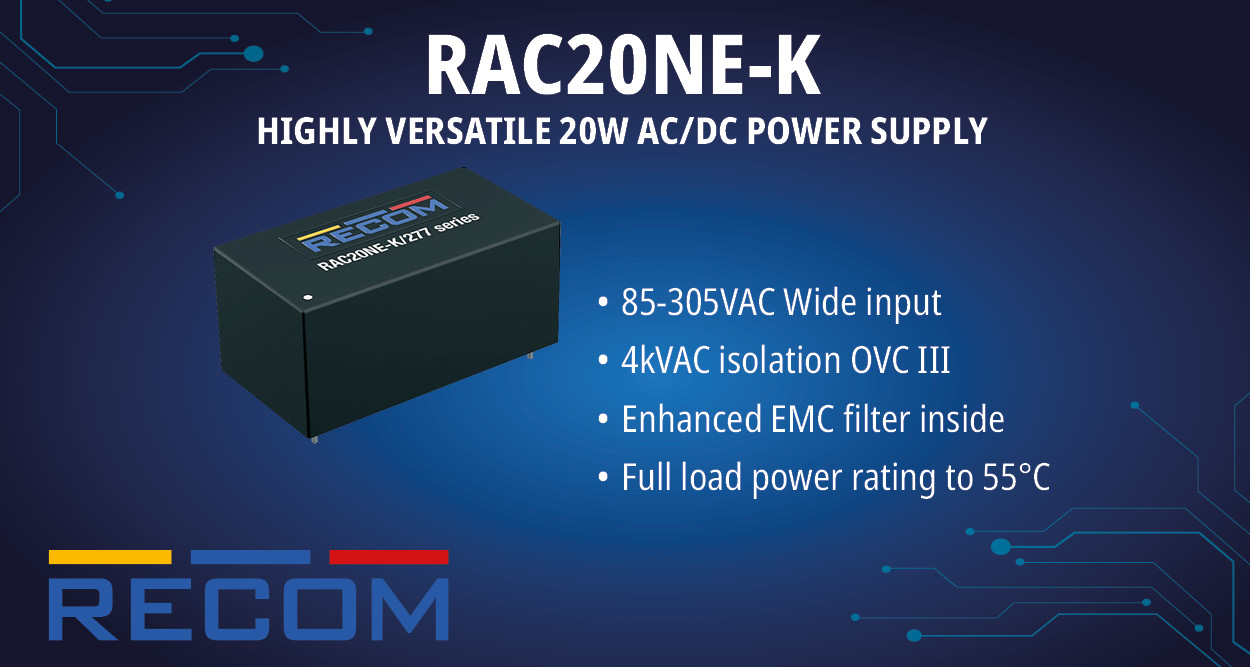The global power electronics market size was valued at USD 30.9 billion in 2024, is set to witness substantial growth, reaching approximately USD 52.28 billion by 2034, at a compound annual growth rate (CAGR) of 5.4% over the forecast period, according to a recent market analysis.
Power electronics technology plays a crucial role in modern electrical and electronic systems, facilitating efficient power conversion, control, and energy management. The market expansion is primarily driven by increasing demand for energy-efficient solutions, rapid advancements in semiconductor technologies, and the growing adoption of electric vehicles (EVs) and renewable energy sources.
Trends of Power Electronics Market
Surging Demand for High-Energy and Power-Efficient Devices in the Electronics Sector
The global rise in consumer electronics consumption is driving significant demand for power electronics, particularly for applications requiring high energy efficiency and advanced power management solutions. Smartphone usage has grown substantially worldwide, with a vast portion of the global population owning a device. This expansive user base, coupled with increasingly complex devices featuring advanced applications, faster processors, expanded memory capacities, and high-resolution displays, has intensified the need for efficient power management technologies.
Additionally, the increasing number of networked devices is further amplifying the demand for power-efficient components. The rapid evolution of charging technologies and power management systems is accelerating the adoption of advanced power electronics. Modern electronic devices now require high-performance chargers capable of delivering optimal power in minimal time, driving innovations in Gallium Nitride (GaN) power electronics, which offer superior efficiency and reduced heat generation.
Beyond consumer electronics, industrial applications are also witnessing a surge in demand for power electronics. Uninterruptible power supplies (UPS), server power supplies, power converters, and motor drives are increasingly integrating power-efficient technologies to enhance power density, improve thermal performance, and lower operational costs. This trend is particularly evident in data centers and industrial environments, where energy efficiency plays a crucial role in reducing expenses and enhancing system reliability.
Key Market Drivers
Rising Demand for Energy-Efficient Systems – With global initiatives focusing on sustainability and energy conservation, industries are increasingly investing in power electronics solutions to enhance efficiency and reduce power losses.
Growth in Electric Vehicles (EVs) – The rising adoption of EVs worldwide is propelling demand for power electronics components, such as inverters, converters, and battery management systems.
Expansion of Renewable Energy Integration – The shift towards renewable energy sources, including solar and wind power, is boosting the need for power electronics to manage power distribution and grid stability.
Technological Advancements in Semiconductors – Innovations in wide-bandgap semiconductors, such as silicon carbide (SiC) and gallium nitride (GaN), are enhancing the efficiency and performance of power electronic devices, driving market growth.
Market Challenges and Opportunities
Despite the promising outlook, the power electronics market faces challenges, including high initial investment costs and complexity in design and integration. However, opportunities lie in the increasing adoption of smart grids, advancements in industrial automation, and government initiatives supporting electrification and sustainable energy solutions.
Country-wise Insights
Technological Innovation and Industrial Automation Drive Growth in the U.S. Market
The United States market is at the forefront of technological innovation and industrial automation, with power electronics playing a critical role across key sectors such as automotive, aerospace, and renewable energy.
As a global leader in electric vehicle (EV) adoption, the U.S. heavily relies on advanced power electronics to enhance vehicle propulsion systems and expand charging infrastructure. Additionally, the country’s strong emphasis on renewable energy—particularly solar and wind power—continues to drive demand for power electronics solutions, facilitating efficient grid integration and energy storage systems.
Germany’s Manufacturing Sector Fuels Economic Growth
Germany’s reputation for engineering excellence and cutting-edge technology places its manufacturing sector at the heart of economic expansion. Power electronics play a pivotal role in key industries such as automotive manufacturing, industrial automation, and machinery production.
Driven by a strong focus on energy efficiency and sustainability, German industries leverage advanced power electronics to optimize energy consumption and enhance process efficiency. This commitment to innovation continues to position Germany as a global leader in industrial advancement.
Japan’s Power Electronics Market Experiences Significant Growth
Renowned for its cutting-edge technology and innovation-driven economy, Japan is witnessing a surge in its power electronics market. These advanced electronic components play a critical role in the country’s automotive sector, particularly in the development of hybrid and electric vehicles.
Beyond the automotive industry, power electronics are extensively utilized in consumer electronics, industrial automation, and renewable energy systems. This widespread adoption underscores Japan’s commitment to technological advancement and energy sustainability, driving continued market expansion.
Clean Energy and Electrification Drive Market Growth in China
China is a global leader in electric vehicles, renewable energy installations, and consumer electronics, making it a key player in the power electronics sector. The country’s transition toward clean energy and electrified transportation heavily relies on advancements in power electronics.
Government-led initiatives focused on energy conservation and technological innovation are creating substantial opportunities for power electronics manufacturers. With a diverse range of applications and industries to serve, the sector is poised for significant growth in China’s evolving energy landscape.
Future Outlook
The power electronics market is set to experience steady growth as industries worldwide prioritize efficiency, sustainability, and electrification. Companies operating in this sector are expected to focus on research and development, strategic partnerships, and product innovation to gain a competitive edge.
Recent Developments
- October 2024: A report emphasized the critical role of power electronics in renewable energy systems, particularly in managing the intermittent nature of sources like solar and wind. Advancements in energy storage technologies and power converters have improved the efficiency and reliability of these systems, facilitating their integration into global power grids.
- November 2024: A publication discussed the future of power electronics in renewable energy, noting that ongoing developments in advanced semiconductors and power management technologies are making power systems more efficient and reliable. The integration of neural networks for predictive maintenance was also highlighted as a means to reduce downtime and maintenance costs.
- September 2023: Hitachi Energy highlighted the significant role of power electronics in enabling renewable energy growth. Advancements in technology and reliability have led to large-scale implementation of power electronics, transforming industries such as wind energy by providing better control and additional functionalities.
Power Electronics Market Companies:
- Qualcomm
- ABB Ltd.
- Infineon Technologies AG
- Texas Instruments Inc.
- ROHM Co. Ltd
- STMicroelectronics NV
- Renesas Electronics Corporation
- Vishay Intertechnologies Inc.
- Toshiba Corporation
- Mitsubishi Electric Corporation
Power Electronics Market Segmentation:
By Device Type
- Power Discrete
- Power Module
- Power IC
By Material Type
- Silicon
- Germanium
- Silicon Carbide (SiC)
- Gallium Nitride (GaN)
By Application
- Consumer Electronics
- Automotive
- IT & Telecommunication
- Energy & Power
- Industrial
- Military & Aerospace
By Region
- North America
- Europe
- Asia-Pacific
- Latin America
- Middle East and Africa

















